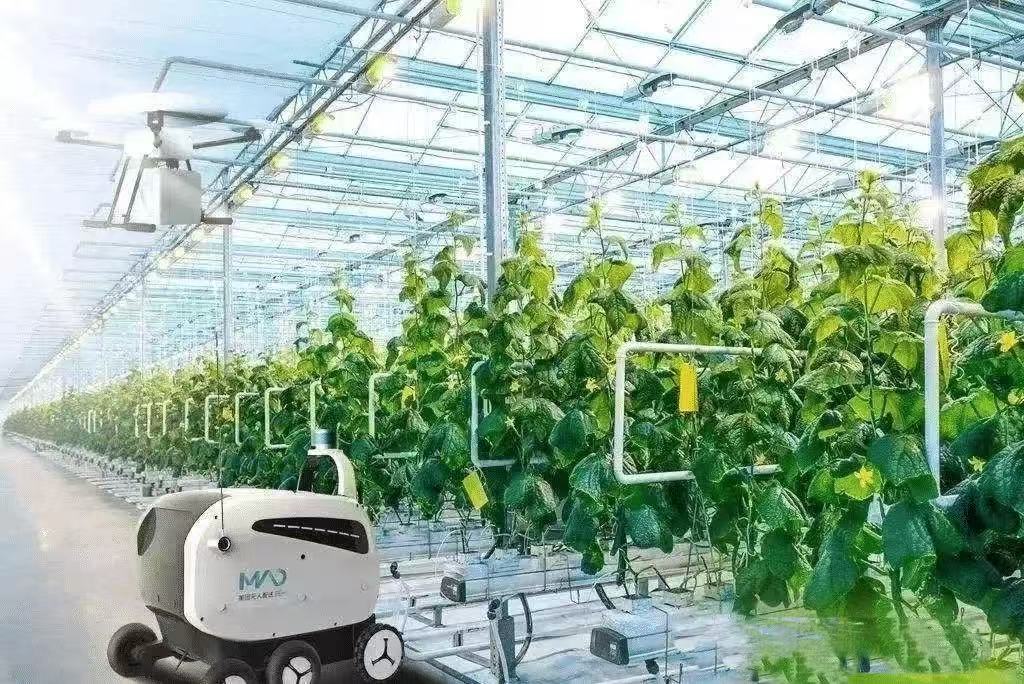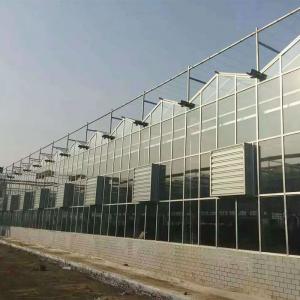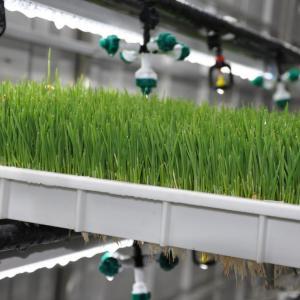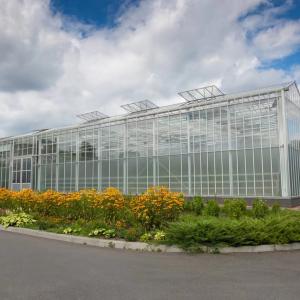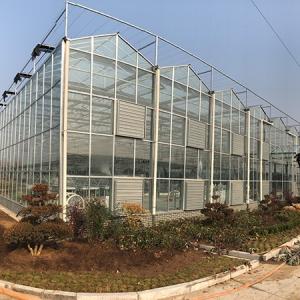Intelligent Greenhouse Advantages: How Smart Agriculture Transforms Modern Farming
As a core carrier of smart agriculture, intelligent greenhouses are high-tech agricultural environmental systems integrating computer-controlled movable skylights, shading systems, thermal insulation equipment, wet curtain fan cooling systems, sprinkler or drip irrigation systems, mobile seedbeds, and other automated facilities. Their control systems consist of three parts: signal acquisition systems, central computers, and control systems, enabling precise regulation of agricultural production environments.
I. Core Supporting Systems of Intelligent Greenhouses
Intelligent greenhouses are integrated environmental control systems in facility agriculture. By adjusting indoor temperature, light, water, fertilizers, air, and other factors, they achieve year-round high and stable yields of vegetables, flowers, and other crops, with significant economic benefits. Their core supporting systems include:
1. Shading Systems
Divided into external and internal shading systems, flexibly designed according to regional climate, crop types, and greenhouse structures. Shading effect depends on the sunlight reflection capacity of the shading net, with significant performance differences among different materials.
Functional features:
· Internal shading system: Integrates multiple functions such as shading, cooling, thermal insulation, energy saving, and anti-condensation.
· External shading system: Does not affect the indoor air environment, with more direct and efficient shading effect.
· Combined use achieves synergistic effects, and users can choose configurations as needed.
2. Ventilation Systems
Mainly used for greenhouse cooling, primarily relying on natural ventilation through top windows to expel hot air (based on the principle of hot air rising). Can be combined with side windows and wet curtain equipment for rapid cooling.
Design key points: Need to consider local natural conditions such as annual average wind direction to optimize window layout and maximize natural ventilation.
3. Computerized Intelligent Control Systems
Developed specifically for agricultural greenhouse environment control and meteorological observation, serving as the "brain" of intelligent greenhouses.
Monitoring range: Covers agricultural environmental factors such as ambient temperature, humidity, indoor light, soil temperature and humidity, wind direction, wind speed, air pressure, rainfall, solar radiation, and ultraviolet rays.
Core function: Automatically controls equipment such as window opening, film rolling, fan wet curtains, biological supplementary lighting, and irrigation fertilization according to crop growth needs, regulating environmental parameters to the optimal range for crop growth.
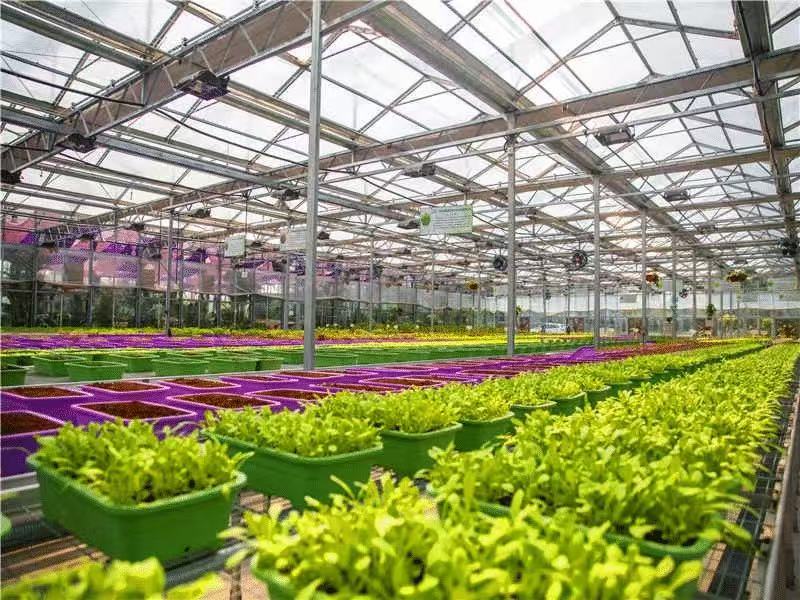
II. Core Advantages of Intelligent Greenhouses
1. Year-round Continuous Production
Relying on precise environmental control capabilities, it can simulate the natural environment required for crop growth, breaking seasonal restrictions to achieve year-round planting.
Case: Lettuce in JD.com's plant factory can be harvested 18 times a year, and the harvest cycle of strawberries and other crops is significantly shortened, providing an efficient and stable production model for growers.
2. Significant Reduction in Labor Costs
Automates labor-intensive tasks in traditional farming (such as watering, fertilizing, shading, thermal insulation, ventilation, cooling, etc.). Adopts water-fertilizer integration technology to realize synchronous and precise control of watering and fertilization, reducing resource waste and operational costs.
3. Real-time Monitoring of Crop Growth
Can collect key parameters of crop growth in real-time and automatically send alarm information when abnormalities occur. Supports remote access and control, helping growers optimize planting strategies, adjust environmental parameters in a timely manner, and improve yield while achieving energy and water conservation.

III. Planting Advantages of Intelligent Greenhouses
1. Stable and Controllable Production Environment
Precisely regulates temperature, humidity, light, carbon dioxide concentration, and other factors, avoiding the impact of natural disasters such as temperature fluctuations, rain, snow, wind, and frost. Provides stable growth conditions for crops, improves growth rate and quality, and reduces growers' worries about weather changes.
2. Precision Water and Fertilizer Management
Precisely supplies water and nutrients according to crop needs through advanced irrigation and fertilization systems, improving resource utilization efficiency. Can dynamically adjust water and fertilizer ratios and application times according to crop growth stages, promoting healthy crop growth and increasing yields.
3. Full-process Automated Management
Automated control systems can automatically adjust the greenhouse environment, reducing manual management intensity and costs, and improving production efficiency and product quality. Supports remote monitoring and data transmission, allowing growers to grasp the greenhouse status in real-time and make timely adjustments to ensure crop growth.
4. Reduced Pest and Disease Risks
Adopts advanced technologies such as biological control and selection of pest-resistant varieties to reduce pesticide use and ensure agricultural product safety. Through environmental control and real-time monitoring, timely detects and addresses pest and disease issues, reducing production losses.
5. Sustainable Planting Models
Realizes recycling of water resources and energy, such as rainwater collection systems for irrigation and solar energy and other renewable energy sources for power supply. Reduces dependence on non-renewable energy and environmental pollution, in line with ecological protection concepts.
6. Efficient Use of Land Resources
Adopts vertical planting, hydroponics, and other technologies to reduce land occupation:
· Hydroponic technology eliminates the need for soil, reducing land pollution.
· Vertical planting improves per unit area yield through multi-layer shelf layouts, saving land resources.

IV. Development Trends of Intelligent Greenhouses
As an important part of modern agriculture, intelligent greenhouses focus on higher intelligence, environmental protection, and popularization:
1. Upgrade of Intelligent Management Systems
Integrates advanced sensor technology and artificial intelligence algorithms to achieve real-time and precise monitoring and control of greenhouse climate, temperature, humidity, carbon dioxide, and other parameters. Optimizes plant growth environment management to further improve production efficiency and product quality.
2. Strengthening of Environmental Protection and Energy-saving Design
Promotes renewable energy such as solar and wind power for electricity supply, reducing dependence on traditional energy and carbon emissions. Adopts recyclable materials, water-saving irrigation, and other technologies to reduce resource consumption and environmental pollution.
3. Expansion of Application Scope
Extends from traditional agriculture to urban agriculture, landscape architecture, and other fields, such as urban rooftop greenhouses and open-space greenhouse construction, contributing to the sustainable development of urban supply chains. Applied in landscape design to create green urban spaces and improve urban environmental quality.
4. Popularization and Cost Optimization
With technological progress and large-scale application, the cost of intelligent greenhouses will gradually decrease, promoting adoption by more agricultural producers and designers. Accelerates the sustainable development of agriculture and urban greening.
